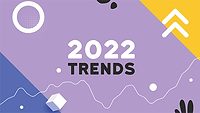Daring to Be Wrong: Why Divergence Drives Dividends
Scaling Your Restoration Business Is a Lot Like Moving

Photo credit: FatCamera/E+ via Getty Images
Conflict is all around us. We’ve been taught it’s something to avoid, something to deescalate whenever possible. Why? Because conflict takes energy and an ability to be comfortable with being uncomfortable. But what we often forget is conflict also gives way to growth, new ideas and passion.
Most workplaces are a melting pot of different economic and cultural backgrounds, and if we think of these as the lens through which we look at the world, it’s safe to say each contributor has a unique interpretation of the workplace (and the people in it). When different perspectives collide, sometimes there’s friction. And while not all friction has business value, the most profitable organizations understand it’s a critical component of a healthy bottom line.
Embracing the Science of Debate
The positive impact of debate isn’t theory; it’s fact. The Massechusetts Institute of Technology (MIT) monitored the revenue growth of 60 offices over a period of eight years. Some offices were all-male, others mixed-gender, and what they found was the offices with an equal gender distribution were 41% more profitable. To take the data a step further, a study from Harvard Business Review found heterogeneous workforces are 70% more likely to penetrate new markets, and subsequently new revenue streams, than their monolithic peers.
This shouldn't come as a surprise. Greater diversity brings with it a more colorful breadth of experience, and it’s no secret that go-forward strategies leverage past experiences as a springboard. Eclecticism expedites decision making and reduces risk, as each voice at the table brings their own ledger of past failures and successes for the group to learn from as a collective.
Creating an environment where conflict isn’t perceived negatively is easier said than done, and a culture of confidence must precede a culture of divergence, and confidence stems from prioritizing impact above optics. When your team feels like they’re having a real-world impact, they feel more secure and confident in their roles. And secure colleagues are more open to radical candor. On the flip side, I’ve found employees who are detached from the company mission are far less receptive to voices that contrast their own.
No matter how you spin it, normalizing debate within an organization must start with executives. Individual contributors model the behavior of those above them — if they see candor actively practiced within the C-Suite, they will follow suit. Managing these behaviors through acquisitions and rapid growth is a whole different beast — but we can take a few pointers from the art of feng shui (let me explain).
A Lesson in Feng Shui
Scaling your business — especially through acquisitions — is a lot like moving. You’re retrofitting your existing belongings to a new space, carefully organizing bookshelves and creating balance from the way the bedframe faces. What we’re doing is trying to establish harmony between ourselves and our environment, trying to establish feng shui. The most cohesive homes (or workspaces) embrace a bold color palette, mix history with a fresh perspective, and understand continuity comes not from congruence, but rather compatibility forged between unlike forces.
We should assemble our teams the same way we curate our homes. We must resist the subconscious urge to hire people in which we see ourselves — the full gamut of self from physical appearance to hard skills — and instead, map talent acquisition strategies to our deficiencies. This begins with an objective evaluation of your teams’ strengths and weaknesses, and from their hiring to resources that fill the empty spaces on your mantle.
There’s no exact formula — and creating a balanced workforce is more behavioral than anything else. From what I’ve seen, it comes down to the egos at the top. If your ego won’t allow those around you to shine in their domains, it will be nearly impossible to scale successfully. If every time you present an idea it goes uncontested, you have a feng shui problem. In your next meeting, ask yourself: “How would I react if someone in this room openly challenged me?”
Remember, collaboration is born from candor, and as Charles Darwin once said, "It is the long history of humankind (and animal kind, too) that those who learned to collaborate and improvise most effectively have prevailed."
“What’s Your story?”
I’m a third-generation restoration professional. I watched my father and grandfather master the trade and lay the groundwork for scale. I’ve done every odd job and dirty job. I’ve worked alongside family and strangers. I’ve met and hired all walks of life, from all backgrounds and upbringings. And, here’s what I’ve learned: There’s something to learn from every single person on this planet.
And when even for a split second we let our ego forget this, we miss out on an opportunity for personal growth. If you’re wondering where to start — how to turn the ship in a new direction where divergence is embraced and rewarded – start with reforming your recruitment process. Rather than asking interviewees the tired, old, “Tell me about yourself.” Ask them, “What’s your story?” And most importantly, listen.
If they have a compelling story and it diverges from yours, there’s a good shot they’d fill a gap of some kind — sometimes it’s functional, sometimes it’s cultural. But either way, the more gaps you can fill, the more likely it is you’ll drive the dividends you’re looking for.
Looking for a reprint of this article?
From high-res PDFs to custom plaques, order your copy today!








